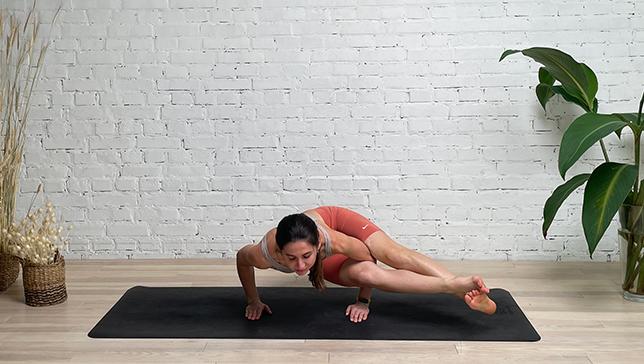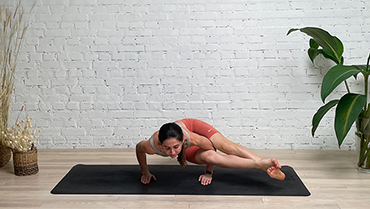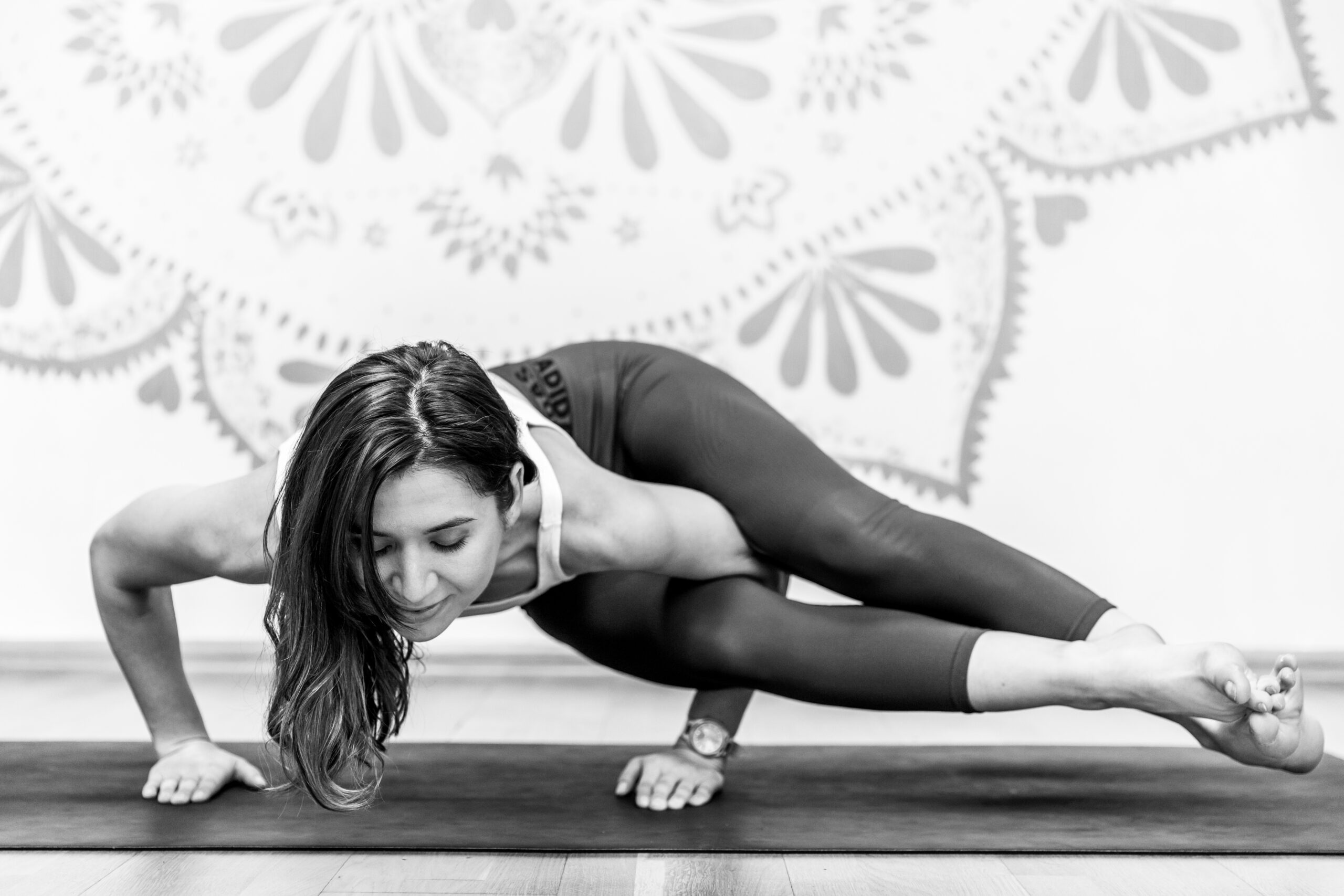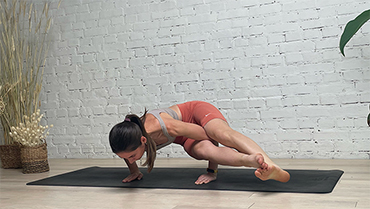Eight Angle Pose - Astavakrasana

Contents
Eight Angle Pose or Astavakrasana in Sanskrit, is an advanced practice forming part of the advanced arm balance sequences, and core strengthening sequences. The practice mainly to build strength and flexibility, at a higher level it helps in maintaining stability and balance, and also helps the practitioner to come out of his physical and mental limitations.
Astavakrasana (Eight Angle Pose) is derived from the Sanskrit words, “asta” meaning eight, “vakra” meaning curved or bent. In Hindu mythology, Astavakra was the spiritual guru of King Janaka of Mithila. When Astavakra was in his mother’s womb, his father Kagola made several mistakes while reciting the vedas . Hearing this, the unborn child laughed in his mother’s womb. The father Kagola, got enraged and cursed his son to be born crooked. As a result, his son was born twisted at 8 places (chest, neck, feet, hands, and knees), and was thus named Astavakra. Despite being crippled, he overlooked his physical body and became a great Guru to King Janaka (who is the father of Sita), a great king himself.
Pose Detail
- By Type: Arm Balance Yoga Poses, Balancing Yoga Poses, Strengthening Yoga Poses
- Difficulty: Intermediate
- Body Position: Inversion Yoga Poses
Step-by-Step Instructions
Benefits and Contraindications
Strengthens the wrists, arms and shoulders
Tones the abdominals
Tones the inner thighs
Improves sense of balance
Helps supply blood to the spine and eliminate toxins.
Injury of the shoulders, arms, wrists, neck, hips, knees, lower back, ankles, feet and pelvis.
Photo poses in different angles



Modification
Work up to Leg-over-shoulder pose (Eka Hasta Bhujasana). You must be able to lift your whole body up before continuing. It may help to place blocks under your hands to press into and assist in lifting your body.
Tips
Keep the upper and lower spine lifted through the crown and firm your abdominals.
Squeeze the thighs together and press through the feet to extend the legs. Keep the palms active.
Be careful not to overstretch the shoulder joint by letting your chest sink through the arms.
Be cautious of your low spine and release if you feel any strain or tension while rotating or lifting.
Frequently Asked Questions
Variations
- Mountain Climber Pose Flow
- Plank Pose Wall Rope Variation Arms Extended
- Plank Pose Variation Wall Shoulders External Rotation
- Dolphin Plank Variation One Leg Raised
- Jump Through Pose
Top Preparatory Poses
- Cobra Pose
- Downward Facing Dog Pose
- Crow Pose
- Side Crow pose
Top Follow-Up Poses
- Flying Splits Pose
- Elephant's Trunk Pose
- Complete Boat Pose